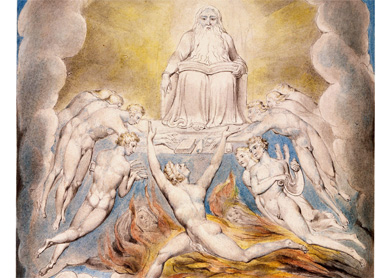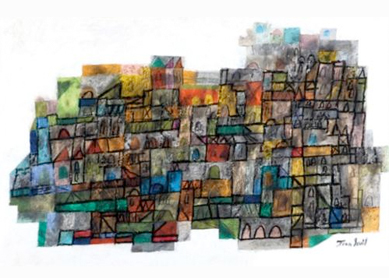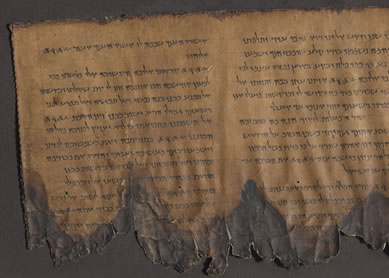For many, the question of how Yahweh (God) might have looked is irrelevant. In
Historians of religion, however, find abundant evidence that Yahweh was commonly imagined using attributes of other ancient Near Eastern gods, especially weather and solar deities. In the tradition of the exodus, for example, Yahweh is depicted as both a storm god and a warrior (see
Archaeological sources also seem to provide visual depictions of Yahweh. One image and inscription from Kuntillet Ajrud may depict Yahweh with a female companion (“his Asherah”). A small statue representing a chair with a bigger and smaller seat may also be explained in this way—a seat each for the divine pair. One finds a similar combination of a bigger and a smaller upright stones in two masseboth (stone pillars) in Arad, albeit without any specific image. Finally, an Achaemenid period coin inscribed with the word Yehud depicts a supreme deity as a seated figure with a wing, a wheel, and a falcon ready to fly. This was possibly intended, and probably understood, as a reference to Yahweh. It is important to note that while the individuals who used these images may have accepted them as appropriate visual depictions of Yahweh, other segments of society would have held different opinions.
It is possible, as many scholars have argued, that the Jerusalem temple held a statue of Yahweh. Nothing is known about its possible appearance, however, and this statue would possibly have been inaccessible to most people in the Holy of Holies. The temple itself may have become one of the symbols of God’s presence, especially after the destruction of the Jerusalem temple in 586 B.C.E. (see, for example,
In the centuries around the exile (roughly the 7th to 4th centuries BCE), there was a general trend in the Near East toward abstract or symbolic representations of the divine: for example, fire (see
Historically, there is precedent for this shift in the scarcity or absence of cultic images for Yahweh during Israel’s early nomadism, where natural features of the landscape—including trees and unhewn stones—were more amenable. The lack of images, however, became a programmatic cultic aniconism (the giving up or banning of cultic material images) in Babylon, as the exiles had to come to terms with the destruction of the temple and its attributes. The rejection of cultic imagery (in material form) led to an emphasis on the “word”—the Torah. Ironically, this emphasis on the Torah, which grew out of aniconism, later became a material veneration of the “iconic book,” with ritual practices developing around scrolls of sacred Scripture.
Bibliography
- Keel, Othmar. Die Geschichte Jerusalems und die Entstehung des Monotheismus, §§223-245, §§332-343, §§365-380. Göttingen, Germany: Vandenhoeck & Ruprecht, 2007.
- Schellenberg, Annette. “Humankind as the ‘Image of God’: On the Priestly Predication (Gen 1: 26-27; 5: 1; 9: 6) and Its Relationship to the Ancient Near Eastern Understanding of Images.” Theologische Zeitschrift 65 (2009), 97-115.
- Lewis, Theodore J. “Art and Iconography: Representing Yahwistic Divinity.” Pages 508-31 in The Wiley Blackwell Companion to Ancient Israel. Edited by Susan Niditch. West Sussex, UK: Wiley-Blackwell, 2016.





